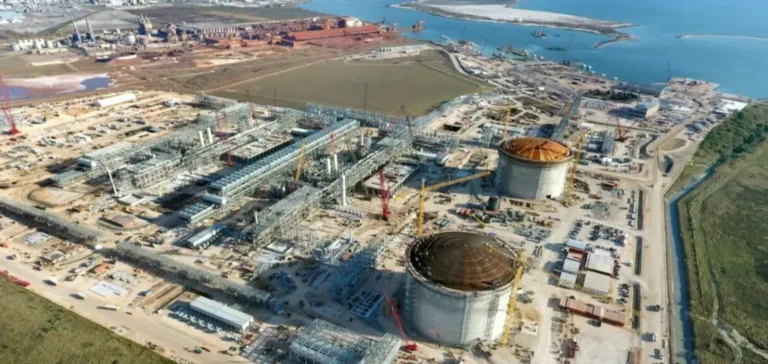Three U.S. regions produce volumes comparable to many producing states and directly influence price formation. Appalachia stabilizes around 33 billion cubic feet per day (Bcf/d), a dry-gas profile supported by sustained productivity and evacuation links that are decisive for pricing. The Permian has lifted associated gas from about 21 Bcf/d in 2023 to nearly 25 Bcf/d in the first half of 2025, a mechanical effect of oil drilling. Haynesville remains in a 14–15 Bcf/d range, with operational proximity to Gulf terminals that shortens transit times and secures feed to liquefaction units.
Market parameters and flow hierarchy
Total U.S. production rose from about 104 Bcf/d in 2023 to 106 Bcf/d on average in the first half of 2025, consolidating the role of balancing supply. Regional differentials reflect infrastructure constraints, with recurring negative basis around the Waha hub when gathering, processing or transport saturates. Appalachia aligns its pricing with the availability of outbound capacity, which determines the spread to the Henry Hub reference point. Haynesville cushions shocks through proximity to terminals, securing feedgas for ramping trains.
Industrial schedules drive international spreads. The phased commissioning of liquefaction units increases absorption of domestic surpluses and narrows basis volatility. Any schedule slippage temporarily strengthens local pressure in associated-gas zones and widens geographic spreads. Maintenance planning and lifting windows determine the smoothness of nominations between producing basins and loading points.
LNG arbitrage and export corridors
Cargoes of liquefied natural gas (LNG) are arbitraged between the Title Transfer Facility (TTF, “Dutch hub”) and the Japan Korea Marker (JKM, “Northeast Asia index”), which guides shipping priorities. The ramp-up of Golden Pass around 18 million tonnes per year and the authorized expansion of Plaquemines reinforce near- and mid-term export capacity. TTF/JKM spreads steer marginal destination, while feedgas availability conditions loading rates. Operators adjust contractual alignments to preserve flexibility between the Atlantic and Asia.
The pipeline corridor to Mexico peaked near 7.5 Bcf/d in May 2025, serving as a structural relief valve when liquefaction demand slows. This pipe-based elasticity limits regional build-ups and eases pressure on Henry Hub. Interconnections and compression at border points become operational levers to arbitrate in real time between domestic and external markets. Balances readjust as liquefaction ramp-ups reshape the hierarchy of outlets.
Compliance and regulation across the chain
The Office of Foreign Assets Control (OFAC, “Bureau de contrôle des avoirs étrangers”) expanded in January 2025 the determinations targeting activities linked to the energy sector of the Russian Federation, including production, liquefaction, services and transport. Traders, charterers, insurers and banks strengthen due diligence on counterparties, transport documents and technical services. Terminal operators harmonize traceability procedures and contractual clauses to secure acceptance and trade finance. The Federal Energy Regulatory Commission (FERC, “Commission fédérale de régulation de l’énergie”) oversees authorizations for expansions of critical infrastructure.
The U.S. Energy Information Administration (EIA, “Agence américaine d’information sur l’énergie”) provides production, export and consumption trajectories used to calibrate drilling, nominations and maintenance policies. Midstream operators prioritize debottlenecking in gathering, processing and compression in faster-growing areas. Producers arbitrate between dry-gas wells and oil-driven campaigns based on regional basis signals and downstream access. Buyers integrate these constraints into lifting windows and seasonal procurement strategies.
Buyer exposure and contractual engineering
Portfolios with redirection options between the Atlantic and Asia preserve value amid weather and industrial demand variations. Henry Hub–indexed contracts with volume tolerances and ramp-up clauses reduce the impact of delays or planned outages. Loading windows align with feedgas availability and train maintenance sequences. Mexican counterparties consolidate a pipeline-based demand base, limiting exposure to international spot signals during tight episodes.
Operational parameters to track combine actual commissioning curves, interconnection fluidity and the evolution of compliance requirements. Basis around Waha serves as a leading indicator of Permian congestion. TTF/JKM spreads signal marginal flow direction and inter-basin arbitrage. The current hierarchy—dry-gas backbone in Appalachia, associated gas in the Permian, flexibility reservoir in Haynesville—continues to shape molecule allocation and price formation.






















